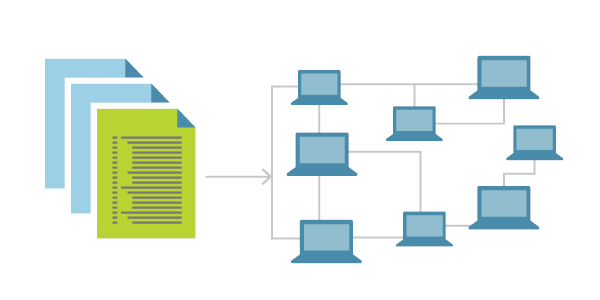Tag: Tools
In our Tools section, we take a look at all the various tools our admins use in their daily lives to maintain the integrity of our servers.
How to Edit Your DNS Hosts File
One of the most powerful tools available to anyone working on their site during a migration is their computer's "hosts" file. The hosts file is used to map domain names to IP addresses, and can be used as an alternative to DNS. It also allows you to specify the IP address to which a website resolves on your computer, regardless of what may be published in the site's DNS zone file.
How to Install and Configure Zabbix on Ubuntu 20.04
Introduction
Zabbix is an open-sourced tool used to monitor various IT components such as servers and hardware that they are running, cloud services, whole networks, etc. Zabbix can monitor the network health and integrity of your servers. All monitoring can be done through Zabbix’s web-based frontend. This means that you can quickly check the status of your servers from anywhere! This article describes how to install the Zabbix monitoring tool, create a database, and configure the frontend on Ubuntu 20.04.
Intrusion Detection Systems: Behind the Firewall
What is an Intrusion Detection System?
An intrusion detection system (or IDS) is a hardware device or software program that observers a network or system for security policy violations or malicious activity. Typically, any activity or intrusion violation is reported to either an administrator or is collected and logged in a central location using a security information and event management system (or SIEM) system. This system is a security-based technology developed initially for detecting exploits and vulnerabilities used against a computer or other target applications.
How To Use the Find Command In Linux

One of the most popular command-line utilities is the find command, mainly because of its simplicity and versatility. It's the default option to search for files across multiple UNIX based systems with a wide range of parameters and variables to narrow down our searches. It helps look for files matching a specific name, date, size, or even owner to provide a frame to append other commands to the list of files found. The basic structure of the find command is as follows.
A Beginner’s Guide to Chef on CentOS 8
What is Chef?

Chef is an open-source configuration management DevOps tool used for configuration and management of multiple systems in infrastructure. Using Chef, we can use so-called recipes and cookbooks to automate and speed up managing multiple systems in our environment. By using Chef, we can adjust every system in our environment to our desired state, which we defined using the code in recipes. In the process, code is continuously tested and deployed using Chef.
How to Install Jenkins on Ubuntu 20.04
How to Install Jenkins on CentOS 8
What is Jenkins?
Jenkins is an open-source software written in Java and Scala. This software allows users the ability to automate almost any task and, it saves significant time that can be better utilized addressing other issues. When automating tasks with Jenkins, users can optimize their workflow by quickly automating the jobs that servers cannot do themselves. In this tutorial, we will learn how to install Jenkins on CentOS 8. We will also explore what its purpose is and share several benefits that Jenkins offers. We will then configure it to run on our CentOS 8 server.
What is Containerization in DevOps?

Containers are the future of application development and hosting. They enable DevOps, developers, and system administrators to build, test, deploy, and maintain applications quickly, securely, and efficiently. Tools built around the containerization concept provide simple solutions for basic web applications. These advanced granular configuration options provide the control many enterprise applications may need.
What is Infrastructure as Code? (IaC)
Introduction: What is IaC?

Today we will become acquainted with a concept known as Infrastructure as Code. The idea of Infrastructure as Code is becoming more and more popular today. IaC is a method used to manage and provision a data center via defined machine-readable files instead of physical hardware configuration or other interactive configuration tools. This article will share what it is used for, why it is important, and why businesses strive to utilize this platform to achieve a desired set of results. It is essential to understand that we will consider both the theoretical and practical parts of IaC.
How to Implement Zero Trust Security in 5 Steps
What is Zero Trust Security?
Zero Trust security is the concept, methodology, and threat model that assumes no user, system, or service operating within a secured internal environment should be automatically trusted. It put forward that every interaction must be verified when trying to connect to a system before being granted access. This concept uses micro-segmentation, and granular edge controls based on user rights, application access levels, service usage, and relation to the location to determine whether to trust a user, machine, or application seeking to access a specific part of an organization.
Our Sales and Support teams are available 24 hours by phone or e-mail to assist.

